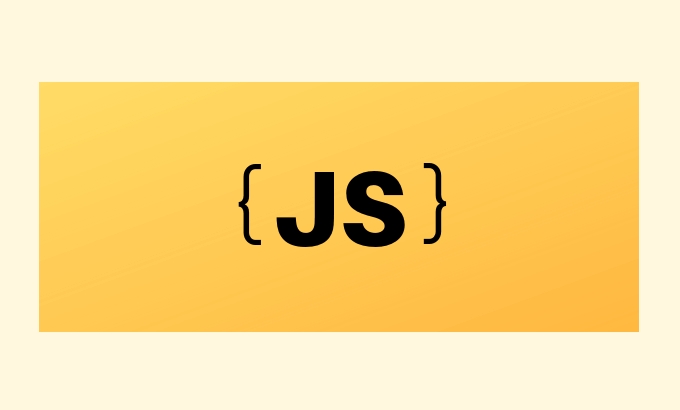To change the CSS style of an element, you can do it by modifying the style attribute or switching the CSS class. 1. To modify the style property, you can set a single style with element.style, such as myElement.style.color = 'red'; Multiple styles can be set in batches by Object.assign. Pay attention to using camel name and the in-line style has high priority. 2. It is recommended to use classList to add, remove or switch CSS classes, such as myElement.classList.add('highlight'), for easy maintenance and reuse. 3. To get the current style, you need to use window.getComputedStyle() to read the actual calculated value, such as console.log(styles.backgroundColor). You cannot use element.style to get the external style directly.

To change the CSS style of an element, using JavaScript is a very straightforward way. You can do this by modifying the element's style attribute or switching the CSS class.

1. Modify the style attribute directly
The easiest way is to set the style through element.style . This method is suitable for modifying a specific style attribute at one time.
const myElement = document.getElementById('my-element'); myElement.style.color = 'red'; myElement.style.fontSize = '20px';
What should be noted is:

- Attribute names should be named by camel (for example,
fontSizeinstead offont-size) - The modified style is inline style, with a high priority and may overwrite rules in external CSS files.
If you need to change multiple styles at once, you can write this:
Object.assign(myElement.style, {
color: 'blue',
fontSize: '24px',
backgroundColor: '#f0f0f0'
});2. Add or remove CSS classes
It is more recommended to define the class style in CSS in advance, and then add or remove these classes through JavaScript. This is easier to maintain and more in line with the principle of separation of concerns.

For example, your CSS might look like this:
.highlight {
background-color: yellow;
font-weight: bold;
}Then use JS to switch this class:
const myElement = document.getElementById('my-element'); myElement.classList.add('highlight'); // Add class myElement.classList.remove('highlight'); // Remove class myElement.classList.toggle('highlight'); // Switch class
The benefits of this approach are:
- Easy to unified management style
- Not prone to errors, especially when dealing with multiple styles
- More readable and reusable
3. Get the current style value
Sometimes you want to read the current style value of an element, so you cannot use element.style directly, because it will only return the value of the style in the line. You should use window.getComputedStyle() :
const myElement = document.getElementById('my-element'); const styles = window.getComputedStyle(myElement); console.log(styles.backgroundColor); // Output the actual calculated value of the background color
This is especially useful when you need to make judgments based on the current style.
Basically that's it. Not complicated but it is easy to ignore some details, such as attribute name format and priority issues.
The above is the detailed content of How to change the CSS of an element using JavaScript?. For more information, please follow other related articles on the PHP Chinese website!

Hot AI Tools

Undress AI Tool
Undress images for free

Undresser.AI Undress
AI-powered app for creating realistic nude photos

AI Clothes Remover
Online AI tool for removing clothes from photos.

Clothoff.io
AI clothes remover

Video Face Swap
Swap faces in any video effortlessly with our completely free AI face swap tool!

Hot Article

Hot Tools

Notepad++7.3.1
Easy-to-use and free code editor

SublimeText3 Chinese version
Chinese version, very easy to use

Zend Studio 13.0.1
Powerful PHP integrated development environment

Dreamweaver CS6
Visual web development tools

SublimeText3 Mac version
God-level code editing software (SublimeText3)

Hot Topics
 Which Comment Symbols to Use in JavaScript: A Clear Explanation
Jun 12, 2025 am 10:27 AM
Which Comment Symbols to Use in JavaScript: A Clear Explanation
Jun 12, 2025 am 10:27 AM
In JavaScript, choosing a single-line comment (//) or a multi-line comment (//) depends on the purpose and project requirements of the comment: 1. Use single-line comments for quick and inline interpretation; 2. Use multi-line comments for detailed documentation; 3. Maintain the consistency of the comment style; 4. Avoid over-annotation; 5. Ensure that the comments are updated synchronously with the code. Choosing the right annotation style can help improve the readability and maintainability of your code.
 Java vs. JavaScript: Clearing Up the Confusion
Jun 20, 2025 am 12:27 AM
Java vs. JavaScript: Clearing Up the Confusion
Jun 20, 2025 am 12:27 AM
Java and JavaScript are different programming languages, each suitable for different application scenarios. Java is used for large enterprise and mobile application development, while JavaScript is mainly used for web page development.
 Mastering JavaScript Comments: A Comprehensive Guide
Jun 14, 2025 am 12:11 AM
Mastering JavaScript Comments: A Comprehensive Guide
Jun 14, 2025 am 12:11 AM
CommentsarecrucialinJavaScriptformaintainingclarityandfosteringcollaboration.1)Theyhelpindebugging,onboarding,andunderstandingcodeevolution.2)Usesingle-linecommentsforquickexplanationsandmulti-linecommentsfordetaileddescriptions.3)Bestpracticesinclud
 Javascript Comments: short explanation
Jun 19, 2025 am 12:40 AM
Javascript Comments: short explanation
Jun 19, 2025 am 12:40 AM
JavaScriptcommentsareessentialformaintaining,reading,andguidingcodeexecution.1)Single-linecommentsareusedforquickexplanations.2)Multi-linecommentsexplaincomplexlogicorprovidedetaileddocumentation.3)Inlinecommentsclarifyspecificpartsofcode.Bestpractic
 JavaScript Data Types: A Deep Dive
Jun 13, 2025 am 12:10 AM
JavaScript Data Types: A Deep Dive
Jun 13, 2025 am 12:10 AM
JavaScripthasseveralprimitivedatatypes:Number,String,Boolean,Undefined,Null,Symbol,andBigInt,andnon-primitivetypeslikeObjectandArray.Understandingtheseiscrucialforwritingefficient,bug-freecode:1)Numberusesa64-bitformat,leadingtofloating-pointissuesli
 JavaScript vs. Java: A Comprehensive Comparison for Developers
Jun 20, 2025 am 12:21 AM
JavaScript vs. Java: A Comprehensive Comparison for Developers
Jun 20, 2025 am 12:21 AM
JavaScriptispreferredforwebdevelopment,whileJavaisbetterforlarge-scalebackendsystemsandAndroidapps.1)JavaScriptexcelsincreatinginteractivewebexperienceswithitsdynamicnatureandDOMmanipulation.2)Javaoffersstrongtypingandobject-orientedfeatures,idealfor
 How to work with dates and times in js?
Jul 01, 2025 am 01:27 AM
How to work with dates and times in js?
Jul 01, 2025 am 01:27 AM
The following points should be noted when processing dates and time in JavaScript: 1. There are many ways to create Date objects. It is recommended to use ISO format strings to ensure compatibility; 2. Get and set time information can be obtained and set methods, and note that the month starts from 0; 3. Manually formatting dates requires strings, and third-party libraries can also be used; 4. It is recommended to use libraries that support time zones, such as Luxon. Mastering these key points can effectively avoid common mistakes.
 JavaScript: Exploring Data Types for Efficient Coding
Jun 20, 2025 am 12:46 AM
JavaScript: Exploring Data Types for Efficient Coding
Jun 20, 2025 am 12:46 AM
JavaScripthassevenfundamentaldatatypes:number,string,boolean,undefined,null,object,andsymbol.1)Numbersuseadouble-precisionformat,usefulforwidevaluerangesbutbecautiouswithfloating-pointarithmetic.2)Stringsareimmutable,useefficientconcatenationmethodsf






